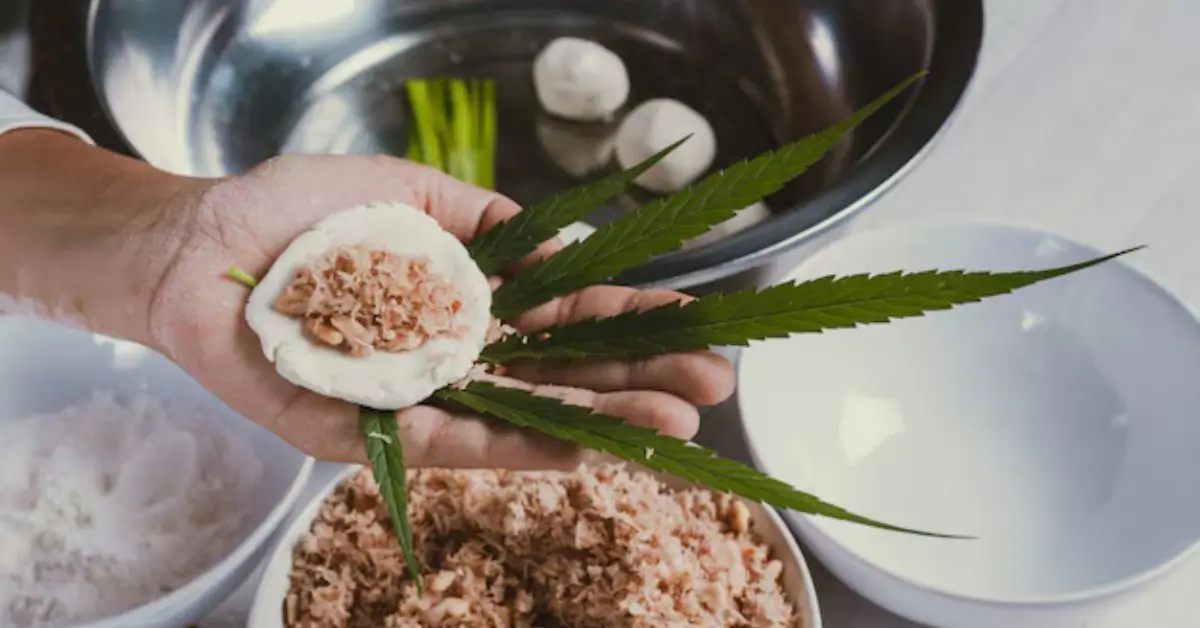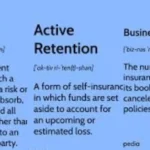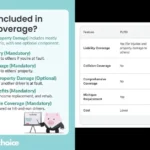Edibles are a popular method of consuming cannabis, offering a discrete, smoke-free alternative for enjoying the therapeutic and recreational benefits of the plant. Unlike smoking or vaping, edibles allow for a longer-lasting and more intense experience, as the cannabinoids are metabolized through the digestive system. Whether you’re a seasoned cannabis enthusiast or a curious beginner, making your own edibles at home can be a fun, rewarding process that allows you to control the potency, flavor, and ingredients.
In this comprehensive guide, we’ll cover everything you need to know about making edibles at home, including decarboxylation, how to infuse cannabis into oils and butter, and how to use these infusions in a variety of delicious recipes. We’ll also explore dosage considerations, safety tips, and frequently asked questions to ensure that your experience with edibles is enjoyable and safe.
The Science Behind Cannabis Edibles
Before diving into the process of making edibles, it’s important to understand the science behind them. When cannabis is smoked or vaped, cannabinoids like THC (tetrahydrocannabinol) and CBD (cannabidiol) enter the bloodstream through the lungs, resulting in almost immediate effects. However, when cannabis is ingested in the form of edibles, these compounds are absorbed through the digestive system and metabolized by the liver.
The liver converts THC into 11-hydroxy-THC, which is more potent and has a longer-lasting effect than the THC absorbed through the lungs. This is why the effects of edibles can be much stronger and last longer than smoking or vaping.
Decarboxylation: The Key to Activating THC
Raw cannabis contains THCA, a non-psychoactive compound that needs to be converted into THC to produce the effects associated with cannabis. This process is called decarboxylation, which occurs when cannabis is exposed to heat. When smoking or vaping, this process happens instantly as the flower is ignited. For edibles, however, you’ll need to decarboxylate the cannabis before infusing it into oils or butter.
How to Decarboxylate Cannabis:
- Preheat your oven to 240°F (115°C). This temperature is low enough to prevent burning the cannabis but high enough to activate the THC.
- Break apart your cannabis into small, uniform pieces. You don’t need to grind it finely; breaking it by hand works well.
- Spread the cannabis evenly on a baking sheet lined with parchment paper.
- Bake for 30-40 minutes, stirring every 10 minutes to ensure even heating. The cannabis should turn a light golden brown color. Once done, let it cool.
Your decarboxylated cannabis is now ready to be infused into oils or butter for making edibles.
Choosing Your Base: Cannabis-Infused Butter or Oil
Cannabis can be infused into a variety of fats, including butter, coconut oil, olive oil, or any fat that you’ll be using in your recipe. The most common bases are cannabis-infused butter (also known as cannabutter) and cannabis-infused oil. Both are versatile and can be used in everything from baked goods to savory dishes.
How to Make Cannabis-Infused Butter (Cannabutter)
Ingredients:
- 1 cup (240 ml) unsalted butter
- 1 cup (240 ml) water
- 7-10 grams of decarboxylated cannabis
Instructions:
- Melt the butter in a saucepan on low heat and add the water. The water helps regulate the temperature and prevent the butter from scorching.
- Add the decarboxylated cannabis to the melted butter.
- Simmer on low heat (160-200°F or 70-95°C) for 2-3 hours, stirring occasionally. Keep the heat low to avoid burning the butter and losing potency.
- Strain the mixture through a cheesecloth or fine mesh strainer to remove the plant material. Be sure to squeeze out as much liquid as possible from the plant matter.
- Chill the butter in the refrigerator until it solidifies. If there is any water separated from the butter, drain it off.
Your cannabutter is now ready to use in any recipe that calls for butter.
How to Make Cannabis-Infused Oil
Ingredients:
- 1 cup (240 ml) of your preferred oil (coconut oil, olive oil, etc.)
- 7-10 grams of decarboxylated cannabis
Instructions:
- Heat the oil in a saucepan on low heat.
- Add the decarboxylated cannabis to the oil.
- Simmer on low heat for 2-3 hours, stirring occasionally. Keep the heat between 160-200°F (70-95°C).
- Strain the mixture through a cheesecloth or fine mesh strainer.
- Store the oil in an airtight container. Your cannabis-infused oil is ready to use.
Dosage Considerations
One of the most important aspects of making edibles is controlling the dosage. The potency of your edibles depends on several factors, including the strain of cannabis you use, the amount of cannabis in the infusion, and how much of that infusion you use in your recipe.
Estimating THC Content
To estimate the potency of your edibles, you’ll need to know the THC content of the cannabis you’re using. This is usually provided on the label of the cannabis product. For example, if you have cannabis that contains 20% THC, this means that 1 gram (1,000 mg) of cannabis contains 200 mg of THC.
Example:
- 1 gram of cannabis = 200 mg THC
- 10 grams of cannabis = 2,000 mg THC
If you use 10 grams of cannabis to make 1 cup of butter, then 1 cup of butter will contain 2,000 mg of THC. If your recipe calls for ½ cup of butter, your recipe will contain 1,000 mg of THC in total. If you cut the recipe into 20 pieces, each piece will contain 50 mg of THC.
Starting with Low Doses
If you’re new to edibles, it’s always a good idea to start with a low dose, around 5-10 mg of THC per serving. You can always eat more if you don’t feel the effects after an hour or two, but you can’t take it back once you’ve consumed too much.
Delicious Edible Recipes to Try
Now that you have your cannabis-infused butter or oil, you can incorporate it into a variety of recipes. Here are a few simple and popular edible recipes to get you started:
1. Cannabis-Infused Brownies
Ingredients:
- ½ cup (120 ml) cannabutter
- 1 cup sugar
- 2 eggs
- 1 teaspoon vanilla extract
- ⅓ cup cocoa powder
- ½ cup flour
- ¼ teaspoon salt
- ¼ teaspoon baking powder
Instructions:
- Preheat the oven to 350°F (175°C).
- In a saucepan, melt the cannabutter.
- In a large mixing bowl, combine the melted butter, sugar, eggs, and vanilla extract.
- Stir in the cocoa powder, flour, salt, and baking powder.
- Pour the batter into a greased 9×9 inch baking pan.
- Bake for 20-25 minutes or until a toothpick inserted into the center comes out clean.
- Let cool before cutting into squares.
2. Cannabis-Infused Chocolate Chip Cookies
Ingredients:
- ½ cup (120 ml) cannabutter
- ½ cup sugar
- ½ cup brown sugar
- 1 egg
- 1 teaspoon vanilla extract
- 1 ¼ cup flour
- ½ teaspoon baking soda
- ½ teaspoon salt
- 1 cup chocolate chips
Instructions:
- Preheat the oven to 350°F (175°C).
- In a large mixing bowl, cream together the cannabutter, sugar, and brown sugar.
- Beat in the egg and vanilla extract.
- In a separate bowl, mix together the flour, baking soda, and salt.
- Gradually add the dry ingredients to the wet ingredients, stirring until well combined.
- Fold in the chocolate chips.
- Drop spoonfuls of dough onto a greased baking sheet.
- Bake for 10-12 minutes or until the edges are golden brown.
- Let cool before serving.
3. Cannabis-Infused Guacamole
Ingredients:
- 2 ripe avocados
- 1 tablespoon cannabis-infused olive oil
- 1 small tomato, diced
- 1 small onion, finely chopped
- 1 clove garlic, minced
- 1 tablespoon lime juice
- Salt and pepper to taste
Instructions:
- Mash the avocados in a bowl.
- Stir in the cannabis-infused olive oil, tomato, onion, garlic, and lime juice.
- Season with salt and pepper to taste.
- Serve with tortilla chips or as a topping for tacos.
Safety Tips for Making and Consuming Edibles
- Start low and go slow: It can take 30 minutes to 2 hours to feel the effects of edibles, so be patient and start with a low dose.
- Store edibles properly: Keep your edibles in a safe place away from children and pets. Clearly label them to avoid accidental consumption.
- Don’t mix with alcohol: Combining edibles with alcohol can intensify the effects of both, leading to a potentially unpleasant experience.
- Know your limits: Everyone reacts differently to cannabis, so it’s important to know how much is right for you.
Conclusion
Making edibles at home is a fun and rewarding way to enjoy cannabis, but it’s important to do so safely and responsibly. By following this guide, you can create delicious, potent edibles that suit your personal preferences and dosage needs. Whether you prefer sweet treats like brownies and cookies or savory options like guacamole, the possibilities are endless. Remember to start with a low dose and give your body time to process the cannabis before consuming more. With a little practice and patience, you’ll be well on your way to mastering the art of homemade edibles.
FAQ
1. How long do edibles take to kick in?
Edibles typically take between 30 minutes and 2 hours to kick in, depending on factors like metabolism, body weight, and whether you’ve eaten recently.
2. How long do the effects of edibles last?
The effects of edibles can last anywhere from 4 to 12 hours, with the peak occurring around 2-3 hours after ingestion.
3. Can I use raw cannabis in edibles?
No, you must decarboxylate the cannabis to activate the THC before using it in edibles. Otherwise, the THCA in raw cannabis will not produce psychoactive effects.
4. Can I overdose on edibles?
While you cannot overdose in the traditional sense, consuming too much THC can lead to uncomfortable symptoms like anxiety, paranoia, dizziness, and nausea. Always start with a low dose to avoid these effects.











